How to plant an apple tree correctly?
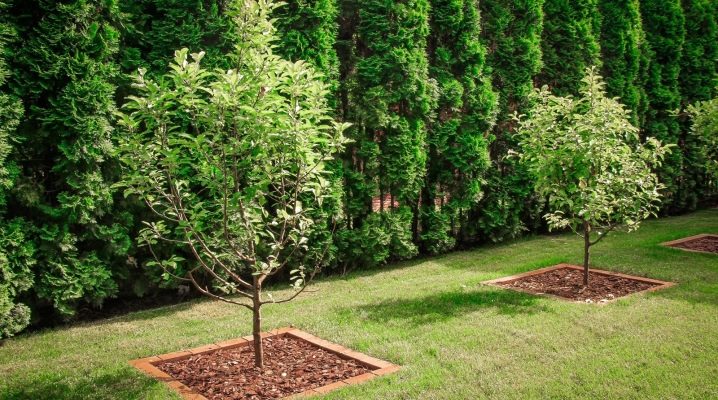
Probably there is no longer a gardener left who would not have planted an apple tree on his site. These trees are not too capricious, and with proper care, they will produce a quality crop for 40 years.
Timing
The gardener has two planting periods to choose from - spring or autumn. In the case of the autumn period, a wide selection of planting material is provided, but the trees planted before winter partially restore the root system, therefore it is weakened. This is one of the reasons why such apple trees are prepared in such a way that they are better adapted for planting.
Autumn plantings are less reliable in terms of tree survival than spring plantings. At air temperatures above 4 ° C, the roots will grow well. A tree planted in autumn has all the chances to take root before the onset of winter, and growth begins in spring. However, if a cold winter is expected, it is better to keep the apple trees until spring and then start planting, as the roots can easily freeze in the ground.
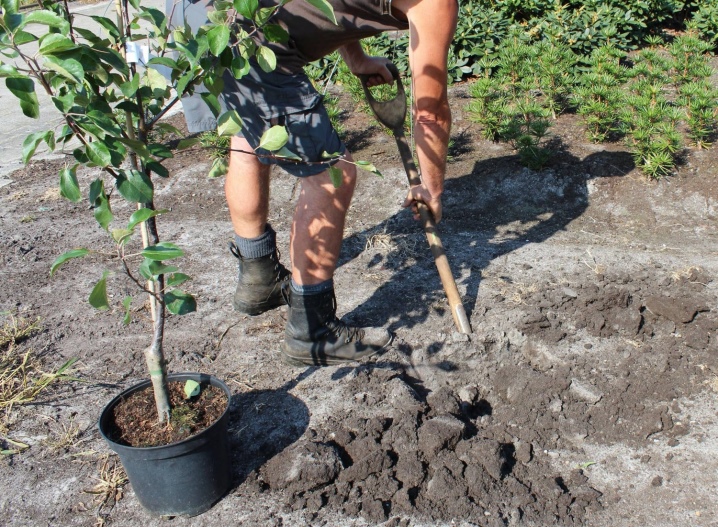
The most suitable planting time in autumn is the second decade of October or early November.
In Siberia, in the Moscow region and in the Urals, planting in the spring begins in the early period, immediately after warming up the earth. Trees are planted without developed leaves. The more developed apple trees are planted, the worse their growth will be. The advantage of planting trees in spring is that there is less risk of damage at low temperatures. It is very important to choose a suitable spring planting date as it cannot be done too late. Delaying planting in autumn is no longer as risky as in spring.

Apple tree seedlings in a container can be planted at any time. The procedure is carried out only on cloudy days, regardless of the chosen period. It is best to plant trees immediately after purchase.
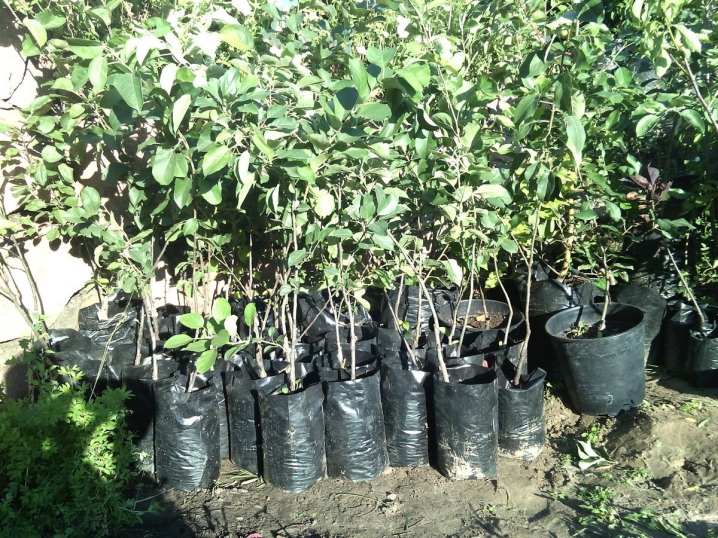
Sapling selection
When buying seedlings from the nursery, you should pay special attention to their health condition. Plants should have a fresh look - the bark on the shoots is smooth, shiny, without signs of diseases. Trees on sale must be labeled with information about the grower, species name, variety, type and age. When transporting from the nursery, the root system should be protected from drying out, and after bringing the seedling to the site, immediately plant it.
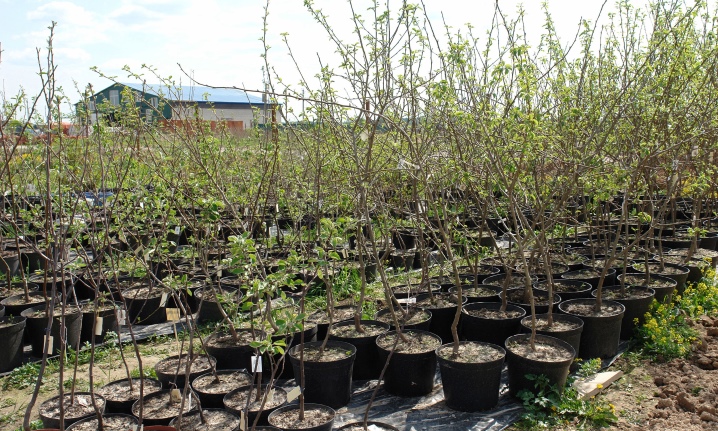
Where can you plant?
It is better to choose a landing site in advance. It will be difficult to grow near large trees in the shade of an apple tree. Many gardeners choose to plant fruit trees on a hill.
Landing on level ground
Immediately before planting, the root system is examined and damaged or too long roots are cut with scissors. Planting begins with driving in a wooden stake in the selected place, which will be a support for the tree.

The stake is installed on the west side, at a distance of 10-12 cm from the trunk. The size of the hole must be adapted to the size of the root system. When planting, make sure that the roots are loose in the hole and not curled up. The average hole size is 40-50 cm in diameter and 30-40 cm in depth.
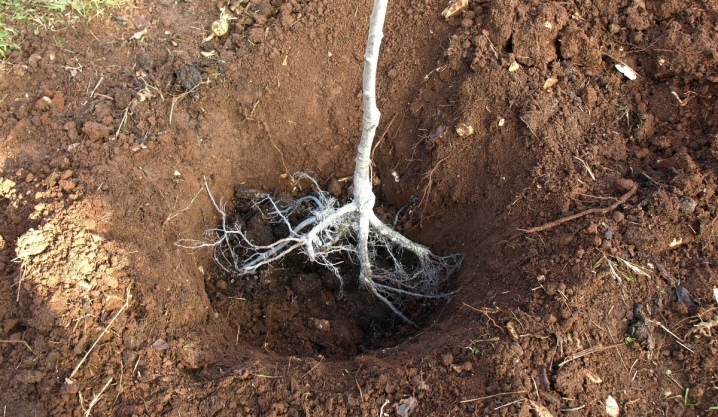
The bottom should be fertilized with manure, compost or peat, which increase soil fertility. The seedlings are planted 2-3 cm deeper than they grew in the nursery, and in such a way that the grafting site is above the soil surface. After covering the roots, the soil around should be tamped. A recess is formed around the trunk in the ground, called a cistern, which facilitates the collection of water.

Landing in the hills
This method is recommended in cases where there is a high level of groundwater on the site or there are signs of soil fatigue. The process consists in planting trees on small hills and securing them in two places to stakes.
After installing the seedlings and tying them with wire, the root system is buried with earth and compost, forming a shaft 30 cm high.
Saplings should be planted on a cloudy day to prevent overdrying of the root system. It is also possible to first form a tree and then plant the apple trees using the traditional method by digging holes in the hill. With this method, however, there is a risk of exposing the root system and increasing its sensitivity to frost.
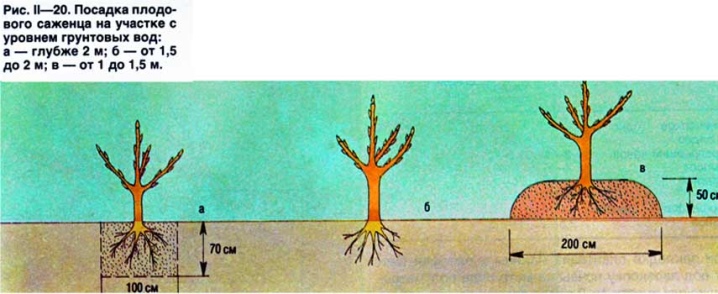
How to prepare a pit?
Experts advise preparing the planting hole in advance, and not immediately before planting the seedling. Preparation should be carried out at least six months before planting the apple tree, if it will be carried out in the fall, and for planting in the spring - at least three months.
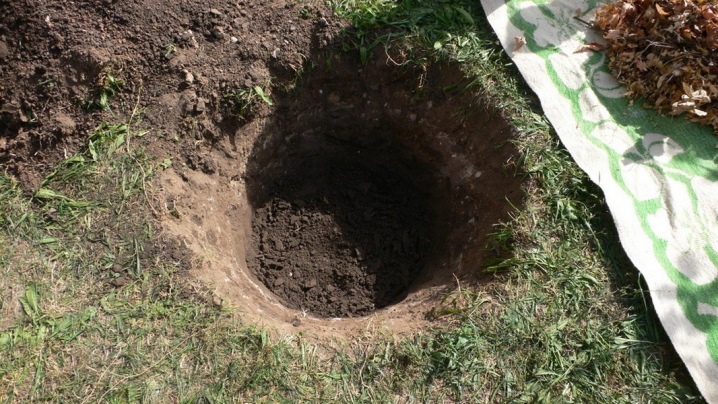
This is done to strengthen the walls of the pit. Fertile soil will not allow erosion to negatively affect the crumbling of the walls when the position of the groundwater changes. This requirement is not met by novice gardeners, as a result:
- poor growth;
- poor development of the main shoot;
- late fruiting.
The size of the pit for planting a plant in clay and sandy soil will also differ. It is not always advisable to immerse the apple tree seedling deeply, sometimes the distance close to the surface gives the best result.
The work looks like this:
- first we choose a place;
- we add the top layer of fertile soil;
- we install a stake in the landing pit;
- place an apple seedling and tie it to a support;
- fill the hole with earth and water it.
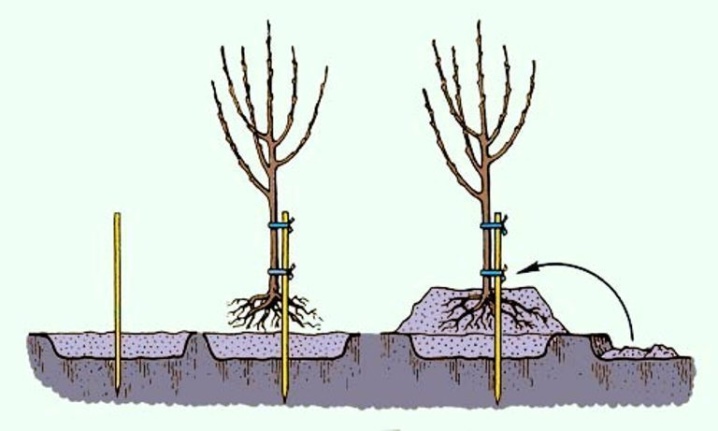
When the water table is high, it is recommended to plant young trees in the hills.
When preparing the hole, it is worth remembering that this tree prefers soil with a neutral pH. Consider how moist the soil is just before planting. In the event that it rained the day before, then the planting is postponed, if there was a drought, then water is first poured into the pit so that the tree takes root better. It is equally important at this stage to remove unnecessary roots, there is little benefit from them, only they will disrupt natural growth.
The width and depth of the planting hole will depend on the age and variety. In one-year-old colonial trees, the immersion depth is 50 centimeters, the same width. If the variety is ordinary, not tall, then meter by meter.
The dimensions of the root ball should also be taken into account. Trees that are two years old require holes 1 m wide and 1.20 m deep. In case it is a dwarf variety, you can make it 50 cm wide and 70 cm deep.
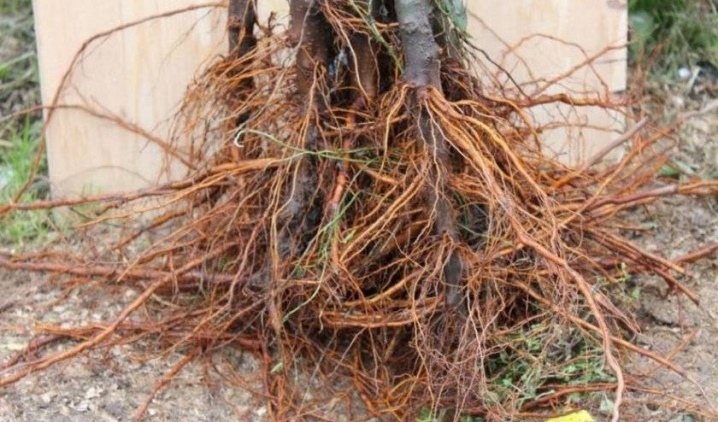
In sand and clay, it is equally important to use a nutrient mix before planting. As a rule, the following mixture will need to be prepared for one seedling:
- 2 buckets of rotted humus or compost is allowed;
- a pair of peat buckets;
- superphosphate will need 1 kilogram;
- ash.
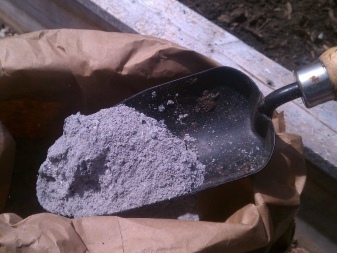

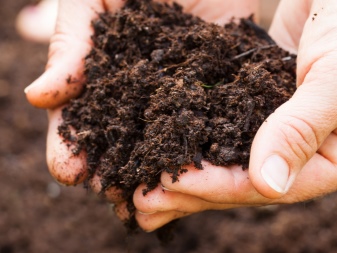
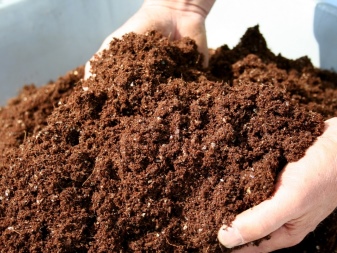
Half of the dug hole is filled with the specified mixture, the rest with the soil that was dug before that. You can put instead of ash:
- 150 grams of potassium sulfate;
- 100 grams of potassium chloride.
The apple tree grows well with organic matter, it can be humus or compost. Nitrogen fertilizers are not added to the fill mix, as they negatively affect the survival rate. Lime cannot be used either.
It is important to know in advance the composition of the soil where they are going to plant. If it is clay or sand, you can use a special commercial soil or plant a tree with soil from a nursery.

Note: you can not add manure that is not rotted, especially this rule applies to chicken manure. In this particular case, it is poison, it produces ammonia and hydrogen sulfide, and they, in turn, lead to poisoning of the apple tree root system.
If the soil is sandy, you can dilute it with a layer of clay, about 10 cm.Thus, the soil's ability to retain moisture is increased.
After planting and compaction of the soil, the soil should be about 20 cm above the soil level. Over time, it will settle. The location of the root collar is equally important. She:
- should be above the ground;
- be on the south side;
- be intact.
Otherwise, it can lead to rotting of the tree or to its death.
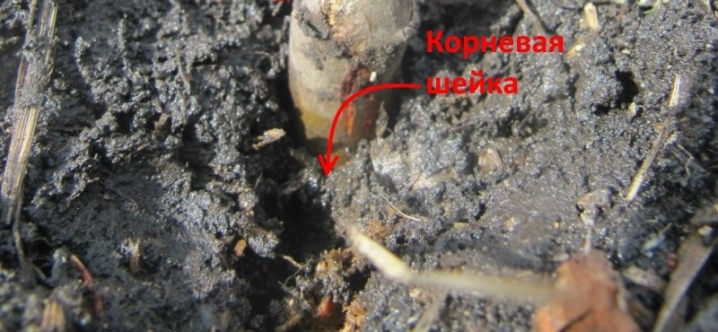
Preparation of planting material
Before a young tree is transferred to the ground, it will need to be kept in a special composition. The root system is immersed in a liquid mixture of clay and soil or manure and earth. The consistency is thick sour cream. 2-3 hours is enough, it is allowed to leave the apple tree overnight. As a supplement, you can use a growth stimulant.
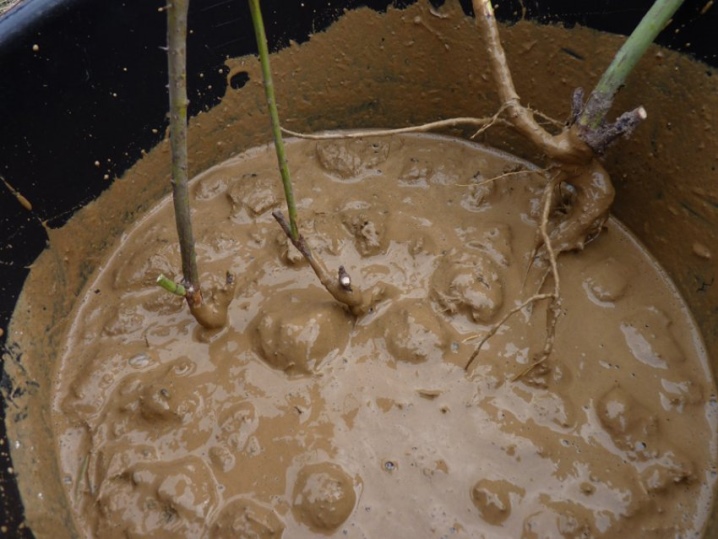
Scheme and distance from the fence
There is a strictly regulated distance at which it is worth planting an apple tree from the fence. The size of the tree is taken into account first. If the tree belongs to a tall variety, then it is 4 meters, for dwarf ones - at least 2 meters.
Then, when seedlings are planted in groups, a row pattern is used. The beds are recommended to be located from east to west, since the crown should be well lit for all trees.
Tall varieties require a distance between plantings of at least 6 meters. In undersized apple trees, the crown is small in diameter, so 4 meters is enough.
With columnar trees, everything is different, here the main scheme is 1 * 1 meter between apple trees and 1.5 meters between rows.
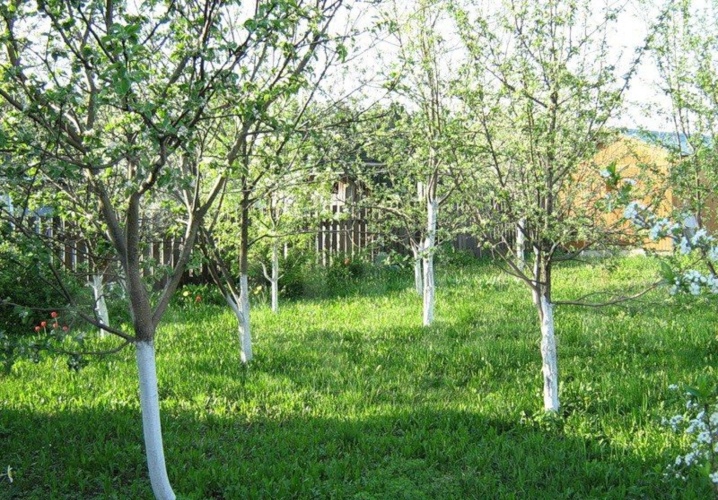
Landing technology
If you know how to properly plant a young apple tree on the site, then it will take root better and will not cause unnecessary trouble. Depending on whether a cutting or a tree with a closed root system is planted, the planting rules will differ.
Cuttings
Growing a young tree from a cutting is not easy, it will take much more effort. The sequence of actions plays a decisive role here. You need to understand that from the moment of cutting the cutting to planting it in the ground sometimes it takes about a year.
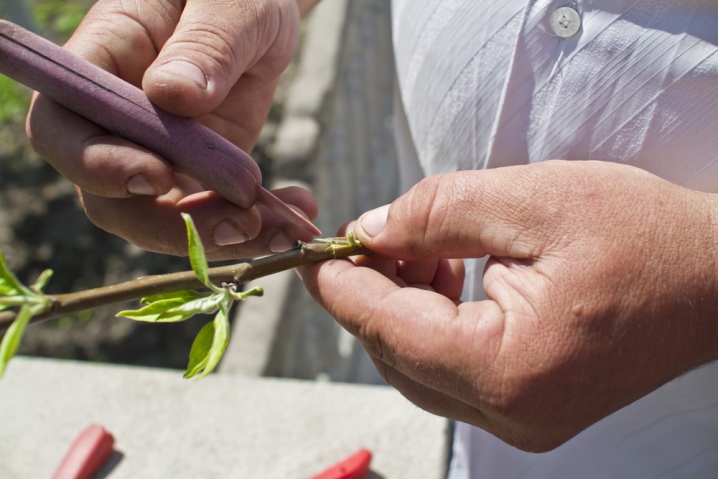
The process is as follows.
- Annual shoots connected at an angle are used as material. Their approximate length is from 30 to 40 cm, while there should be 5-6 buds on the shoot.
- The cut branches are placed in water, where a growth stimulator is previously added. It is better to make several such cuttings at once, so that later you can choose the most viable ones.
- As soon as the root system appears, the seedling is transferred into the ground under the greenhouse.
- The appearance of green buds indicates the rooting of a young tree.
- Be sure to do regular watering, but only when the soil begins to dry out. It is better to do this with a spray bottle.
- The greenhouse is opened for a while in good and sunny weather. This is how a young apple tree learns to adapt to its environment.
- A shoot is transferred to a permanent place in the garden, which has already appeared several branches with leaves.
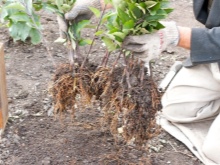
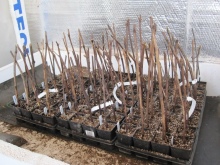
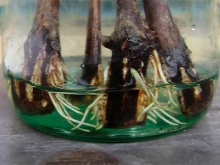
Such an apple tree grows well on almost any soil, except for too calcareous. The optimal pH level ranges from 5.5 to 6.7. Trees on M9 rootstock need fertile and sufficiently moist soils, while M11 and MM106 trees can also be planted on sandy soils.
It is recommended to plant young apple trees grown from cuttings in lighted areas. Tall trees do not tolerate groundwater, therefore, at the landing site, the latter should be 150 cm from the earth's surface.
It is equally important to carefully prepare the soil for the tree grown from the cuttings. If the grower provides the plants with good conditions for growth, then such care promotes the early entry of trees into the fruiting period. The soil should first of all be enriched with mineral and organic fertilizers, and the acidity should be adjusted. You need to start as early as possible, at least six months before planting. You can add manure or compost. The dose of the former should be 5-7 kg / 1 m2.
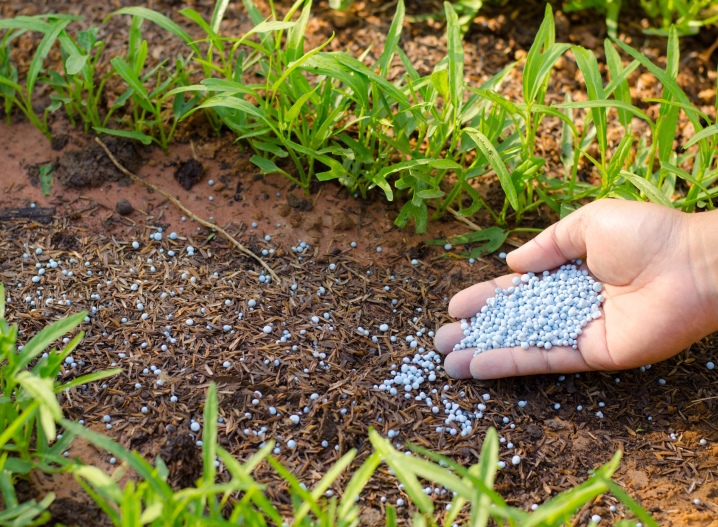
Closed root system
It is more convenient to plant grafted trees with a closed root system, since in this case the stress for the apple tree is minimal, and the root system is practically not injured. The procedure is as follows.
- The apple tree will need to be removed from the container in which it was brought along with the nutrient mixture and immersed at the bottom of the planting pit.
- If the tree was in a peat container, then it is planted just like that.
- The root collar should be slightly above the ground level, as well as the grafting site, so it is worth directing the seedling in such a way that its immersion depth is strictly observed.
- Then the first layer of earth is poured, tamped with hands to remove air "pockets".
- Light watering is carried out, the earth is again poured into the planting hole, completely filling it and even pouring a slide 20 cm high.
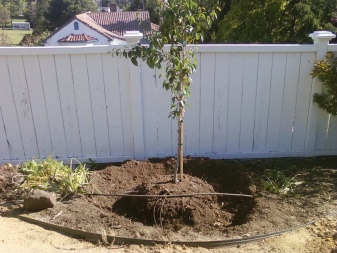
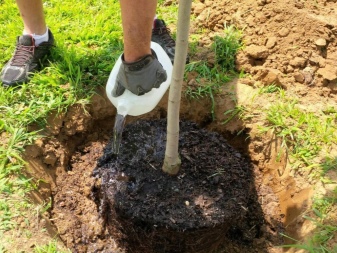
It does not matter at what time to disembark, it is allowed to carry out the procedure even in summer. In the first year, you do not need to expect great growth from the apple tree, during this period it should only root well.
About three months before planting, you need to fertilize the soil. For this purpose, a hole is dug with dimensions of 1 m and a depth of 80 cm. A stake is installed at the bottom with a length equal to the parameters of the trunk plus 1 meter. Complex fertilizer for fruit trees is added to the ground.
Immediately before planting, dig a hole slightly larger than the volume of the root system. The damaged roots are removed, and the rest are pruned. In order for the tree to take over better, it is advisable to immerse the roots in the mud bath discussed above.
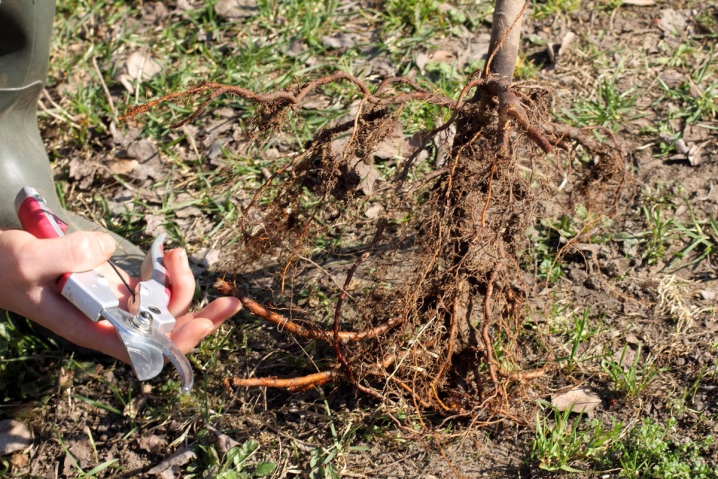
It is recommended to grow apple trees in double-row strips. The most commonly used distances are 3.5 x 1-1.5 m for small apple trees and 4 x 2-2.5 m for tall ones.
Follow-up care
The correct cultivation of apple trees is a process that consists of several stages:
- pruning;
- watering;
- spraying;
- top dressing.

Pruning
Newly planted seedlings are pruned in March or April in spring. If the apple tree is planted in the fall, then we prune it in the first spring, and the trees planted with the arrival of heat - immediately after planting. Pruning the apple tree after planting is the first step in shaping the crown of the tree.
A tree with an unbranched crown, that is, with one central trunk, is cut to a height of 70 to 90 cm. From this point, the tree will begin to release side shoots. If we want more space under the apple tree, the processing should be carried out even higher.
If we plant a tree with the main and several lateral shoots, then pruning after planting consists in the formation of 3-7 shoots, located horizontally or slightly obliquely and distant from the rest. The left branches are slightly reduced by 1/4 or 1/3 of the length, and the main trunk is also slightly pruned to stimulate its growth.
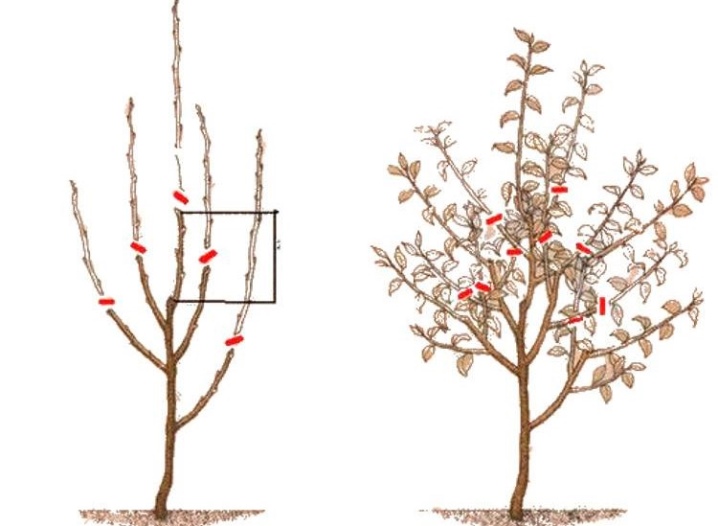
In the future, it is necessary to take care of the tree every year. Garter young seedlings is required.
Watering
No matter how ridiculous it may sound, it is necessary to water the young apple trees correctly. Seedlings require weekly watering during periods of little or no rainfall, especially during the first 2 years of life. Not many gardeners manage to comply with the regime, therefore it is recommended to use mulch.
A 5-7 cm layer of litter made from leaves, needles or bark will help contain weeds. Cover the soil around the trunk at a distance of 50 cm or more.
The mulch should not touch the tree. You should also avoid using oak bark or other hardwoods as bedding, as they absorb nitrogen from the soil, which can have a negative effect on the apple tree.
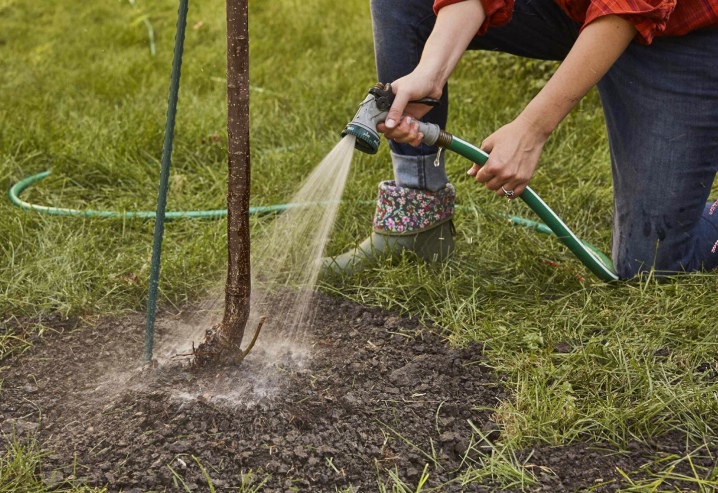
Spraying
One of the worst fungal diseases is, of course, scab. As a result of the activity of the pathogen, leaves, fruits, shoots and flowers are affected. As a result, the growth of the apple tree is suppressed, the leaves dry up, after which they fall off. Fruits with numerous spots, cracks become distorted and lose their value.
Antracol 70 helps a lot. At a later date, Miedzian 50 is used. In addition, after harvesting, it is worth spraying the affected tree with a 4-5% urea solution.
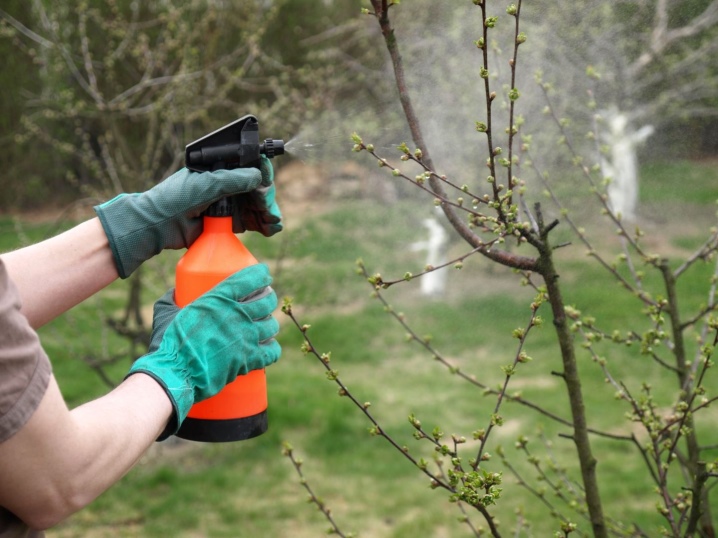
Top dressing
It also happens that the leaves of the apple tree in the country have darkened or it no longer grows. This is not always a sign of illness, sometimes the reason is a lack of nutrients. High-quality feeding is required in different growing seasons, but in order not to harm the tree, it should be done correctly.
A fertilizer containing nitrogen, phosphorus and potassium (10-10-10) is suitable for this fruit tree. It should be applied in early spring, while the buds have just hatched.
Top dressing is distributed evenly under the tree and spreads over the entire width of the peri-stem circle. If the apple tree grows on a lawn, which also consumes large quantities of trace elements from the soil, then it is worth increasing the dose.







The comment was sent successfully.